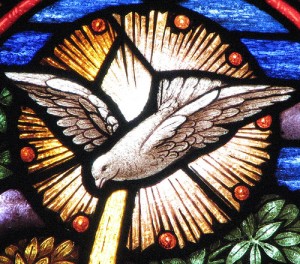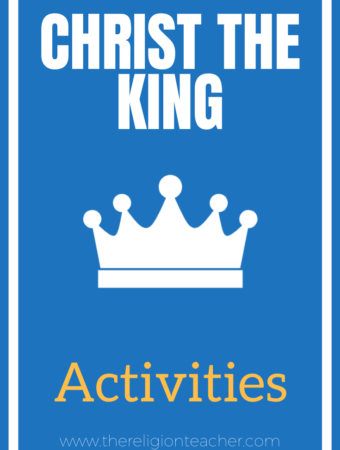What do you teach after Confirmation is over (post-Confirmation sessions)? I recently shared a Confirmation lesson plan that focused on the deductive method of catechesis. The other approach to teaching ritual is the inductive method. This method begins with the ritual and and applies the actions to beliefs. In the case of Confirmation, this means discussing the experience of the young Confirmandi as they listened to the Bishop’s homily, renewed their Baptismal Promises, experienced the laying on of the hands, and were anointed with oil. By parsing out the details of the experience down to the very smell of the oil, some new understandings of the ritual can be brought to light. This is a time of mystagogy in which the students should be given the opportunity to understand what they have experienced.
Lesson Objectives:
SWBAT make connections between their experience of the Sacrament of Confirmation and the Lessons they have learned about Confirmation.
Activities:
1. Confirmation Journaling:
Give students the opportunity to journal or list all of the events that occurred during their Confirmation. Ask them to write every detail they can remember about the sacrament.
2. Class Discussion:
List all of their journal responses on the left side of the board. Engage students to explain in detail what they remember.
3. Guided Discussion:
Focus on some key symbols of the sacrament (oil, laying on of the hands, “Be Sealed with the Holy Spirit,” etc. Have students suggest what each symbol might mean and what Catholic beliefs each symbol or ritual action represents. You might have them use a graphic organizer, similar to the one used on the Rite of Confirmation Lesson Plan.
4. Class Discussion:
Have students recall the lessons they have learned about Confirmation, the Holy Spirit, the gifts of the Holy Spirit, etc. List these on the right side of the board.
Assessment:
- Venn Diagram or 3-Column Chart – Have students choose a memory from the sacrament that connects with a Catholic belief about Confirmation that they have learned. In the middle have the students write a brief description of the connection between them.
- Class Discussion – If time is pressed (and this often happens in the short meetings after Confirmation), you may just want to discuss the connections. Make sure you let the students talk and get multiple students to participate in the class discussion.
Confirmation Videos & Worksheets
You may want to review the Sacrament of Confirmation with these two videos: the Sacrament of Confirmation Symbols and the Sacrament of Confirmation Effects Video. Both videos are available exclusively to members of The Religion Teacher. (Learn more.)
You may also find this collection of worksheets useful: The Religion Teacher’s Confirmation Worksheets.
(Photo credit: hickory hardscrabble)



This is very interesting stuff! I’m curious to know how they responded. Did they react well to the questions? It seems like most 8th graders would clam up with questions like that but I’m sure if you’ve already established a culture of journaling and group discussion in your classroom you wouldn’t have too much trouble getting them to participate.
I bet the journaling beforehand really helps to loosen them up for discussion as opposed to just jumping in and doing group discussion on this stuff.
Great questions, Marc. First off, yes I think the journalling helps establish some talking points that they can use in the actual classroom discussion itself. This also helps me feel fairly confident that if I call on a student, they will at least have something to say.
With the most recent group of students, the discussion went very well. The key for me was to focus on the detail and write everything on the board including the most irrelevant details (my sponsor wore dressy clothes, the Mass was long, the bishop left the ambo, etc.). Starting small and building into deeper concepts always makes a difference when facilitating a discussion.